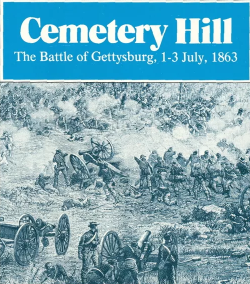
Cemetery Hill, subtitled "The Battle of Gettysburg, 1–3 July 1863", is a board wargame published by Simulations Publications, Inc. (SPI) in 1975 as part of the "quadrigame" Blue & Gray: Four American Civil War Battles that simulated four battles of the American Civil War. Cemetery Hill was later released as a stand-alone "folio" game.

Chinese Farm, subtitled "Egyptian-Israeli Combat in the '73 War", is a board wargame published by Simulations Publications, Inc. (SPI) in 1975 that simulates operational level ground combat between Egypt and Israel at the Battle of The Chinese Farm during the just completed Yom Kippur War of October 1973. Chinese Farm was originally published as part of the "quadrigame" Modern Battles: Four Contemporary Conflicts.

Napoleon's Last Battles is a board wargame published by Simulations Publications in 1976 that simulates the last four battles fought by Napoleon. It was one of SPI's most popular games, and also received many positive reviews.

Marengo: Napoleon in Italy, 14 June 1800 is a board wargame published by Simulations Publications Inc. (SPI) in 1975 as one of four games packaged together in the Napoleon at War "quadrigame". Marengo was also released as a separate game the same year. The game simulates the Battle of Marengo between Austrian and French forces.
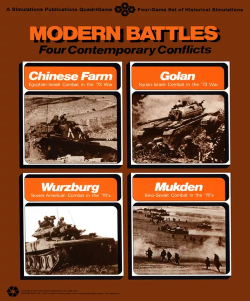
Modern Battles: Four Contemporary Conflicts is a collection of four board wargames published by Simulations Publications Inc. (SPI) in 1975 that simulates four modern-day battles set in the early 1970s.

Napoleon at War, subtitled "Four Battles", is a collection of four board wargames published by Simulations Publications Inc. (SPI) in 1975 that simulates various battles fought by Napoleon.

Bloody Ridge, subtitled "Turning Point on Guadalcanal, September 1942", is a board wargame published by Simulations Publications Inc. (SPI) in 1975 that simulates the Guadalcanal Campaign during World War II. The game was originally published as part of the Island War: Four Pacific Battles "quadrigame" — a gamebox containing four games simulating four separate battles that all use the same rules. Bloody Ridge was also published as an individual "folio game."
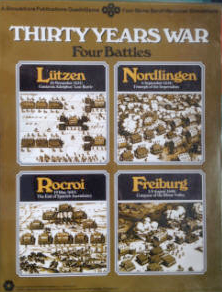
Thirty Years War, subtitled "Four Battles", is a "quadrigame" — four separate board wargames packaged in one box that use a common set of rules — published by Simulations Publications Inc. (SPI) in 1976. The four games simulate different battles during the Thirty Years' War, and were sold individually as well as in the quadrigame format. Some of the games were well received by critics, but overall, the quadrigame did not sell well.

Arnhem, subtitled "Operation Market-Garden, September 1944" and also published as A Bridge Too Far: Arnhem, is a board wargame published by Simulations Publications Inc. (SPI) in 1976 that simulates Operation Market Garden during World War II, when Allied forces attempted to create a salient in the Netherlands, using paratroopers to take strategic bridges over the Rhine. Arnhem was originally published in the WestWall "quadrigame", but was also packaged for sale as an individual game.

Westwall: Four Battles to Germany is a collection of four board wargames published by Simulations Publications (SPI) in 1976 that simulate battles in Europe in late 1944 and early 1945 during World War II.

Blue & Gray II, subtitled "Four American Civil War Battles", is a collection of four board wargames originally published by Simulations Publications, Inc. (SPI) in 1975 that each simulate a battle from the American Civil War. It is the sequel to Blue & Gray published earlier in the year. Each of the four games was also published as individual "folio games."

Bar-Lev, subtitled "The Yom-Kippur War of 1973", is a board wargame published by Conflict Games in 1974, only months after the end of the Yom Kippur War. The game simulates battles on the two major fronts of the war: the Golan Heights and the Suez Canal. The game proved very popular, and a second edition was published by Game Designers' Workshop (GDW) in 1977.

Hurtgen Forest, subtitled "Approach to the Roer, November 1944 ", is a board wargame published by Simulations Publications Inc. (SPI) in 1976 that simulates the Battle of Hürtgen Forest during the final year of World War II. The game was originally published by SPI as part of a four-game collection titled Westwall: Four Battles to Germany, but it was also released as an individual "folio game." While the quadrigame Westwall received good reviews from critics, the static nature of Hurtgen Forest was less well received.
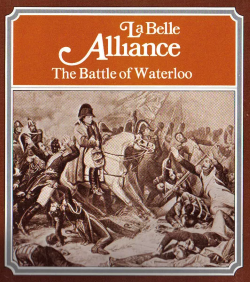
La Belle Alliance: The Battle of Waterloo is a board wargame published by Simulations Publications Inc. (SPI) in 1976 that simulates the Battle of Waterloo in 1814. It was one of four games that were published as part of the "quadrigame" titled Napoleon's Last Battles, but was also released as an individual "folio game", packaged in a shrinkwrapped cardboard folio.

The Battle of Nations, subtitled "The Encirclement at Leipzig, 16–19 October 1813", is a board wargame published by Simulations Publications Inc. (SPI) in 1975 that simulates the Battle of Leipzig in 1813. It was one of four games that were published as part of the "quadrigame" titled Napoleon at War, but was also released as a "folio game", packaged in a shrinkwrapped cardboard folio. It was popular in a 1976 poll of favorite wargames, and critics also gave it favorable reviews.

Jena-Auerstadt: The Battle for Prussia is a board wargame published by Simulations Publications Inc. (SPI) in 1975 that simulates the twin battles of Jena and Auerstadt in October 1806. It was one of four games that were part of the "quadrigame" titled Napoleon at War, but it was also released as an individual "folio game" packaged in a shrinkwrapped cardstock folio. Jena-Auerstadt was rated highly in a 1976 poll of favorite wargames, but critics questioned whether its simplicity was capable of simulating a complicated two-part battle.

Four Battles from the Crimean War is a "quadrigame" — a set of four thematically linked games that use the same set of rules — published by Simulations Publications Inc. (SPI) in 1978 that simulates four battles during the Crimean War.
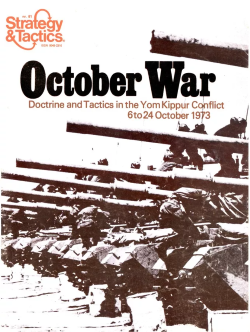
October War: Doctrine and Tactics in the Yom Kippur Conflict, 1973 is a board wargame published by Simulations Publications, Inc. (SPI) in 1977 that simulates the Yom Kippur War.
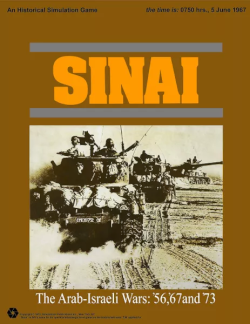
Sinai: The Arab-Israeli Wars – '56, '67 and '73 is a board wargame published by Simulations Publications Inc. (SPI) in 1973 that simulates three conflicts in the Middle East: The 1956 Suez Crisis, the 1967 Six-Day War, and the just-completed 1973 Yom Kippur War. The staff of SPI had been developing a wargame simulating a hypothetical Middle East conflict when war broke out in October 1973. Using newspaper and television reports, SPI found that their envisioned simulation was not accurate, and quickly redeveloped the game, releasing it only weeks after a ceasefire had been signed. The game proved very popular, and remained a best-seller for SPI during the 1970s.
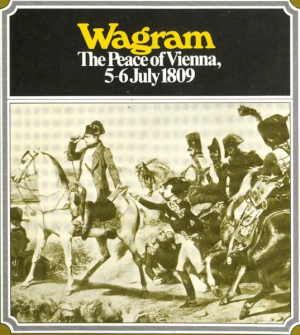
Wagram: The Peace of Vienna, 5–6 July 1809 is a board wargame published by Simulations Publications Inc. (SPI) in 1975 that simulates the Battle of Wagram in July 1809. It was one of four games that were part of the "quadrigame" titled Napoleon at War, but it was also released as an individual game with a set of metal miniatures. Wagram was rated highly in a 1976 poll of favorite wargames, and critics called it the best of the four games in the Napoleon at War box.




















